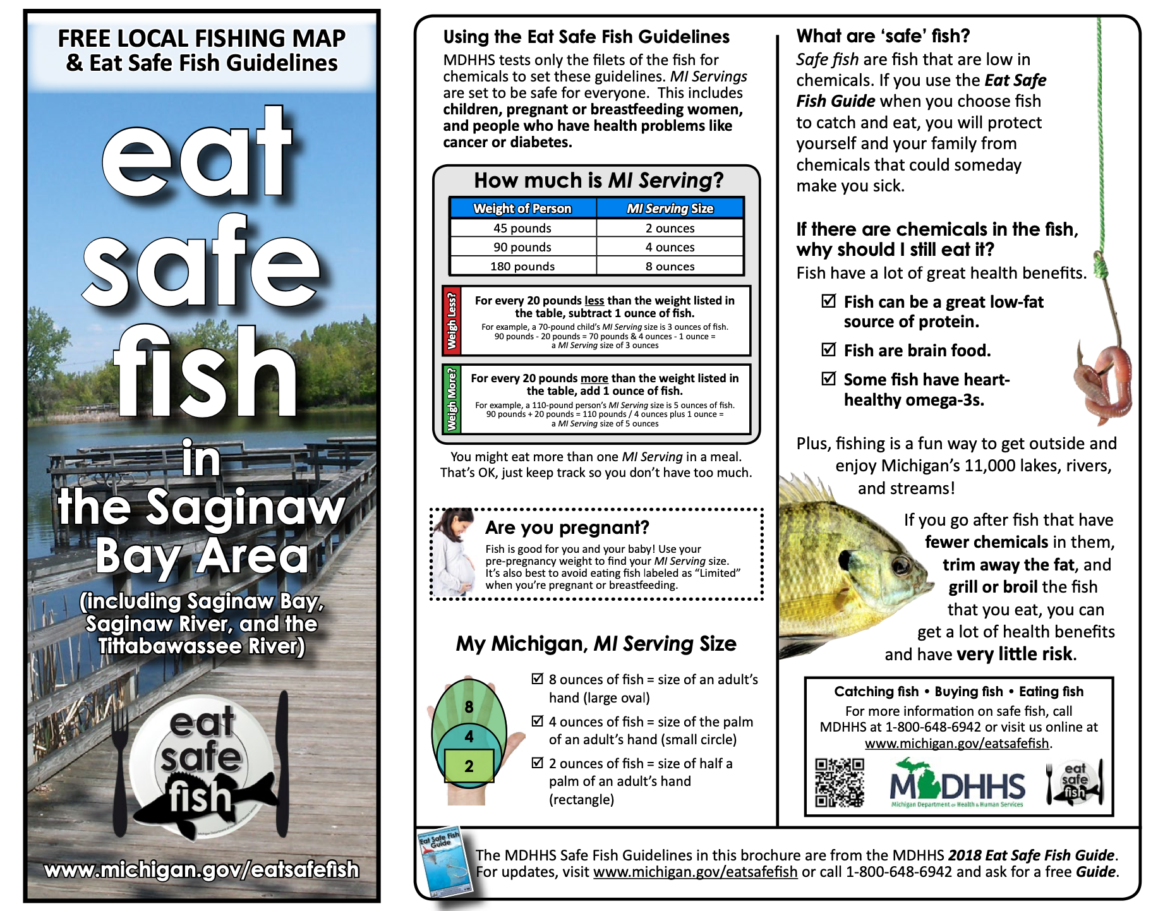
This article was republished here with permission from Great Lakes Echo.
By Cameryn Cass, Great Lakes Echo
The Great Lakes Basin draws millions of anglers each year to fish in its lakes, rivers and streams.
In addition, millions more of the region’s residents consume those fish.
The problem is, only about half the people in the Great Lakes states are aware of such advisories, according to a recent study from the University of Wisconsin-Madison.
The study in the journal “Science of the Total Environment” found that 5 million people exceeded the recommended fish intake of two meals or 12 ounces per week, as suggested by the Environmental Protection Agency, over the study’s 12-month survey period.
Notably, women, nonwhites, younger residents and those with lower education levels were less aware of fish advisories, and thus more prone to eat more than the recommended amount, researchers found.
The advisories come from state public health agencies. For Michigan, this year’s guidelines were released in May by the Department of Health and Human Services.
The study suggested that the ease of catching and buying Great Lakes fish and a lack of understanding of health advisories is why residents of the region are twice as likely as others to eat more than the advisories recommend.
Even if someone is aware of an advisory, it’s not always easy to avoid the temptation of a cheap and available source of protein, said Henry Anderson, a co-author of the study.
“It’s a bit like speed limits – even though people are aware of them, it’s not always easy to get people to adhere to them. Fish advisories are the same way,” said Anderson, a University of Wisconsin expert in environmental and occupational health.
To better understand consumption patterns, scientists have increasingly consulted community residents to better understand their needs, said Jim Kelly, an environmental surveillance and assessment manager at the Minnesota Department of Health.
“We want to talk with communities themselves to make sure we’re not getting someone else’s information that could be clouded by their own judgments,” Kelly said.
Anderson said that in the past, advisory information was limited to anglers who purchased a fishing license, a group that remains predominantly male.
Still, the study found, even though licensed anglers were more aware of advisories, they lacked the knowledge needed to decide which species were safe to eat.
The advisories from the EPA and the Great Lakes Consortium for Fish Consumption Advisories suggest appropriate amounts of fish to eat based on contaminant levels in that species: the higher the level, the stricter the advisory, Anderson said.
“The challenge for the advisories is to balance the advice to consume fish so you’re getting the maximum benefit with the least amount of risk,” Anderson said.
Eating fish provides health benefits as a lean source of protein with vitamins and Omega-3 fatty acids, so staying within the recommended consumption levels is advantageous, Anderson said.
But eating too much contaminated fish can result in adverse health effects since contaminants build up in the fish, said Brandon Reid, a toxicologist with the Michigan Department of Health and Human Services and the program manager of the Eat Safe Fish Program.
“We base the guidelines on the level of chemical that’s measured in the part of the fish you eat. It all depends on how much you eat and how much chemical is in the fish,” Reid said.
Increasingly, PFOS (perfluorooctane sulfonic acid) is being discovered in Michigan fish – in places like Oscoda and parts of the Huron River – as the state government ramps up testing for it, he said.
Nicknamed a “forever chemical” for its persistence in the environment, PFOS is linked to higher blood pressure and cholesterol levels, decreased vaccine response in children, lower birth weight and cancer, according to the Agency for Toxic Substances and Disease Registry.
PCBs, or polychlorinated biphenyls, are historical industrial pollutants, and their levels are declining after being phased out of use many decades ago, Reid said.
For humans, PCBs are probable carcinogens, meaning they can cause cancer. Additionally, they’re linked to adverse effects on the immune, reproductive, endocrine and nervous systems, according to the EPA
Still, most Great Lakes fish consumption guidelines focus on mercury, Reid said.
“It’s the classic fish contaminant.”
Mercury is a neurotoxin that’s so prevalent in the environment that all people have trace amounts in their bodies. Methylmercury poisoning might result in loss of peripheral vision, lack of coordination, impaired speech and hearing and muscle weakness, according to the EPA.
Children are most susceptible to this poisoning, especially those in the womb. It can negatively affect their developing brains, impacting cognitive thinking, memory, attention and language, among other things.
Higher mercury intake is a concern with sport-caught fish, even though consumption levels are much lower than that of commercially caught fish, according to the University of Wisconsin-Madison study.
Half the people surveyed exceeded a safe level of mercury, even though they ate less than the recommended maximum of two fish meals per week, the study said.
The culprit? Some of the most popular sport-caught species, including walleye, bass and yellow perch, the study found.
To combat these problems, the Great Lakes states have amped up their outreach efforts to reach more members of the public.
In Michigan, the Eat Safe Fish Program issues press releases and advisory notices complete with QR codes at popular fishing locations to connect anglers to advisories and other information, Reid said.
Additionally, there’s a hotline – 1(800) MI-TOXIC – and a river walker program with folks at the Kalamazoo River, Huron River watershed and in downtown and urban Detroit, ready to answer fish-related questions a curious or concerned angler might have, Reid said.
“We’ve found that talking in-person as opposed to posting information online can reach people a lot easier,” Reid said.
Face-to-face communication, combined with partnerships with community groups, has improved advisory awareness through both trust and relationship-building, he said.
“It’s an ongoing effort,” said Reid.
Kelly said developing fetuses may be the most vulnerable and susceptible to health risks from contaminant exposure, making partnerships with clinicians providing care to pregnant women and those of childbearing age crucial.
“It’s not only avoiding the contaminants to a developing fetus, it’s getting sources of nutrients that’ll be beneficial to their development, too,” said Kelly. “It’s a fine line.”
Partnerships focused on understanding a vulnerable population’s specific needs are reducing contaminant exposure, he said.
“Public health is very much a collaboration. It’s not a one-person-at-a-time thing. We have to work with partners to get our messages out there,” Kelly said.
Catch more news on Great Lakes Now:
Lake Erie’s once-thriving blue pike is long gone but never forgotten
Top 10 Fish to Catch: Great Lakes means great fishing
Tips, Tricks, Recipes: Want to know how to eat Great Lakes fish?
Featured image: An Eat Safe Fish advisory poster for the Saginaw Bay area. (Image Credit: Michigan Department of Health and Human Services)




